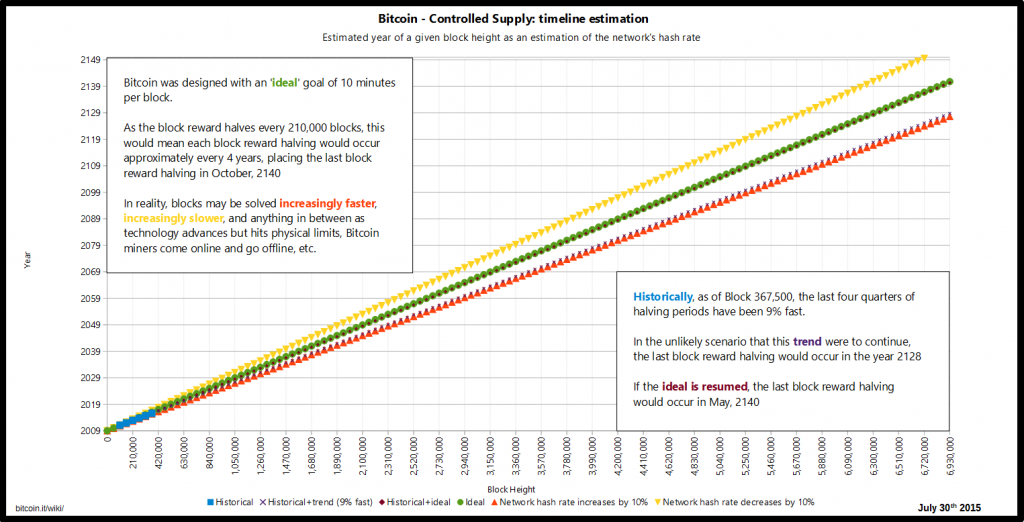Table of Contents
Bitcoin has been a great topic of discussion amongst investors, finance professionals, media outlets, investment commentators, bloggers, etc. The cryptocurrency has been called by a lot of names.
Some of them are ‘the next financial revolution’, internet currency, decentralized money, digital gold, gold 2.0. But what is it exactly?
Bitcoin primarily consists of two things. The token and the protocol that powers the token. In 2009, anonymous creator(s) Satoshi Nakamoto mentioned both, as a ‘Peer-to-Peer Electronic Cash System’ in the white paper.
Represented by the symbol BTC, bitcoin is a medium-of-exchange. By design, there is a cap on the total supply of bitcoin. Only 21 million bitcoins will ever be available.

No individual or centralized authority controls bitcoin’s creation and circulation. BTC leverages cryptography for supply, issuance, and transaction verification. That’s why Bitcoin is a cryptocurrency https://wazirx.com/blog/what-is-cryptocurrency/
On a protocol level, Bitcoin is a distributed network of computers that maintains a record/ledger of all BTC transactions. This network is called the Bitcoin blockchain.
Get WazirX News First
Every network participant has a copy of the ledger, which makes it difficult for hackers and infiltrators to gain access and alter the network data. To understand how this all happens visually, check out the video below:
Why Bitcoin Came into Being?
In the year 2008, The United States housing market crashed. It was a reality check for people putting their complete faith and ‘trust’ in legacy financial systems.
The Great Recession was a result of the failure of trust-based systems. Trust is not bad but it creates inefficiencies and fissures in operational models. It also significantly increases the cost to operate such operational models.
2008’s economic slowdown illustrated the need to democratize finance, to give users the control of their money, to let people be their own banks.
Bitcoin’s idea took shape when Satoshi intended to minimize trust, through the use of cryptographic proof, decentralized network design, and open-source software.
He/She/They designed the protocol in such a way so that bitcoin transactions
- Could happen without permissions and beyond borders
- Are trustless, pseudonymous
- Can happen without anyone blocking or freezing a transaction of any amount
- Takes place faster than usual banking transactions and without being reversed
- Keep happening 24 hours a day, 365 days per year.
When Bitcoin was finally revealed to the public, erstwhile developer and one of Satoshi’s closest associates, Hal Finney posted this tweet:
How Does Bitcoin Work?
Bitcoin leverages a public-key cryptography system, peer-to-peer networking, and mining to process and verify payments.
Network participants or miners engage in a competition to verify transactions using advanced computing hardware designed to solve complex mathematical problems.
The miner who solves the problem verifies the transaction and adds it to a block. This goes on for a while until the block is full. The block then gets added to the longest chain. Miners win an appropriate number of bitcoins generated by the protocol, for quickly adding blocks to the chain. The reward system is called ‘proof-of-work’.
This is how new BTC is created, and subsequently becomes a part of the Bitcoin economy as miners sell these newly minted bitcoins to cover their operational costs.
The addition of transaction information to the blockchain eliminates a ‘double spending’ scenario.
How to Buy Bitcoin, and From Where?
Cryptocurrency exchanges can serve as the most appropriate place to buy Bitcoin. At WazirX, we offer the safest and fastest platform for you to start your Bitcoin journey.
What is the Future of Bitcoin?
Bitcoin has come a long way, since its inception in 2009. It is now supported by a multi-billion dollar BTC mining industry and billions of dollars worth of spot and futures trades that have ballooned Bitcoin’s value over the years. With a market cap of around $170 billion, it is no longer a DIY project for hobbyists.
Just recently, famed billionaire hedge fund investment heavyweight Paul Tudor Jones favored Bitcoin and said that he would give a section of his portfolio to BTC. According to his market outlook, ‘The Great Monetary Inflation’ Mr. Jones drew similarities between bitcoin and the 1970’s gold market.

He said that the first cryptocurrency, just like gold stands to gain a lot on the investment front.
Apart from investment, tremendous progress is happening on the development front. Developers are working tooth and nail to speed up bitcoin transactions. Bitcoin development firm, Blockstream, and off-chain scaling solution Lightning Network deserve notable mentions in this regard.
Bitcoin also stands to become a great smart contract development platform. As per a CoinDesk report published last year, prominent Bitcoin programmer Pieter Wuille, unveiled a new language called ‘Miniscript’ that could find a use for programming Bitcoin-based smart contracts and decentralized applications.
Further Reading:
What is the difference between a token and a Bitcoin?
Are Tether and Bitcoin related? How Tether affects Bitcoin?
6 Things to Consider Before Investing in Bitcoin
What are the Differences Between Bitcoin and Ripple?
6 Bitcoin Myths That You Should Stop Believing
Bitcoin Wallets: The Definitive Guide
What is Litecoin (LTC)? Hows is it Different from Bitcoin?
What are the Differences Between Peer-to-Peer and Regular Bitcoin Exchanges?
Why are Bitcoins More Popular?
6 Tips to Keep Your Bitcoin Wallet Safe
5 Ways to Keep Bitcoin Transactions Private
What Will Happen when all Bitcoins are Mined?
Bitcoins in India: Challenges and Opportunities Ahead
Does Bitcoin have a volatile nature? Why?
Can Bitcoin Replace Credit Cards?
Why Start-ups Should Consider Using Bitcoins?
What is Bitcoin halving? Why is it important for cryptocurrency investors?
Can you buy shares in Bitcoin?
What is the difference between a token and a Bitcoin?
Are Tether and Bitcoin related? How Tether affects Bitcoin?
Frequently Asked Questions
How Many Bitcoins Will Ever Be Created?
The source code of Bitcoin stipulates that it must have a restricted and finite quantity. As a result, only 21 million Bitcoins will ever be generated. These Bitcoins are added to the Bitcoin supply at a predetermined rate of one block every ten minutes on average. The supply of Bitcoins will be depleted once miners have unlocked this number of Bitcoins. It's possible, however, that the protocol for Bitcoin will be altered to allow for a higher supply.
How Bitcoin Mining Works?
Bitcoin mining is a crucial element of the blockchain ledger's upkeep and development and the act of bringing new Bitcoins into circulation. It's done with the help of cutting-edge computers that solve exceedingly challenging computational arithmetic problems. Auditor miners are rewarded for their work. They're in charge of ensuring that Bitcoin transactions go through smoothly and legitimately. This standard was established by Satoshi Nakamoto, the founder of Bitcoin, to keep Bitcoin users ethical. By confirming transactions, miners assist in avoiding the "double-spending issue."
Can Bitcoin Be Converted To Real Money?
Crypto exchanges, Bitcoin ATMs, Bitcoin Debit Cards, and Peer Peer Transactions are all options for converting Bitcoin to cash. This can be accomplished by using Bitcoin exchanges such as WazirX. A Bitcoin ATM is a real place where you may purchase and sell Bitcoins with cash, unlike standard ATMs that allow you to withdraw money from your bank account. Many websites provide the option of purchasing Bitcoin in return for a prepaid debit card that works similarly to a standard debit card. Through a peer-to-peer marketplace, you may sell Bitcoin for cash faster and more privately.
Is Bitcoin Legal In India?
In India, Bitcoin is not illegal. Because of cryptocurrency's rapid evolution, policymakers and regulators seemed to have recognized the chance to accept the new technology early. From the infamous 'RBI ban' in 2018 to reports of an impending bill banning cryptos in 2021 that has yet to develop, India has seen its fair share of ups and downs when it comes to Bitcoin regulation. Last year, the Supreme Court Of India approved the use of Bitcoin throughout the country. According to the Supreme Court, the existence of Bitcoin or any other cryptocurrency is unregulated but not unlawful.
What Is Bitcoin Used For?
Bitcoin was created as a means of sending money over the internet. The digital currency was designed to be a non-centralized alternative payment system that could be used in the same way as traditional currencies. Bitcoin is being used by an increasing number of businesses and individuals. This includes establishments such as restaurants, apartments, and law firms.
Is Bitcoin Trading Is Legal In India?
In 2020, the Supreme Court of India lifted the RBI’s restrictions on cryptocurrencies. According to the Supreme Court, the existence of Bitcoin or another cryptocurrency is unregulated but not unlawful. The verdict has greatly aided the world of digital money in the country. To put it another way, investing in Bitcoin is perfectly legal, and you may do so through various apps and traders.
Is Bitcoin And Cryptocurrency The Same Thing?
Bitcoin is a cryptocurrency that was designed to facilitate cross-border transactions, eliminate government control over transactions, and streamline the entire process without third-party intermediaries. The absence of intermediaries has resulted in a significant reduction in transaction costs. Satoshi Nakamoto, the creator of Bitcoin, created the first cryptocurrency in 2008. It began as open-source software for money transfers. Since then, plenty of cryptocurrencies have emerged, with some focusing on specific fields.
What Type Of Currency Is Bitcoin?
Bitcoin is a type of digital currency or cryptocurrency. In January 2009, Bitcoin was established. It's based on Satoshi Nakamoto's ideas, which he laid out in a whitepaper. The name of the individual or people who invented the technology remains unknown.
Is Bitcoin Mining Free?
Bitcoin mining isn't free, but it can be tried on a budget. Bitcoin mining is an essential part of the blockchain ledger's upkeep and development and the act of issuing new Bitcoins. It is accomplished by the use of cutting-edge computers that tackle complicated computational arithmetic problems. The effort of auditor miners is rewarded. They're in charge of ensuring that Bitcoin transactions go off without a fuss and that they're legal.
How Does Bitcoin Technology Work?
The blockchain is the foundation of Bitcoin. It is a decentralized, distributed ledger that tracks the provenance of digital assets. The data on a blockchain can't be changed by design, making it a real disruptor in industries like payments, cybersecurity, and healthcare.
 Disclaimer: Click Here to read the Disclaimer.
Disclaimer: Click Here to read the Disclaimer.






















3 Comments